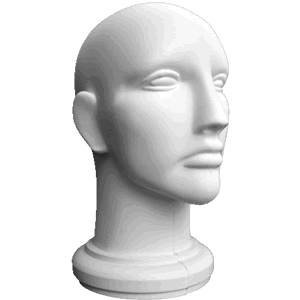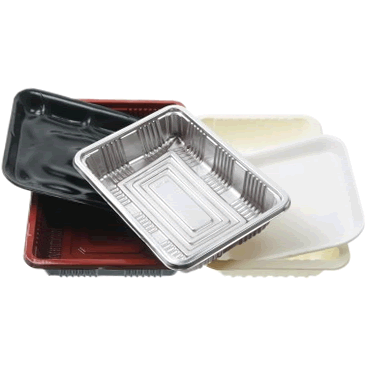 |
PVC is a stiff, heavy, ductile and medium strong amorphous material. By adding softeners, softer material may be achieved, ranging from a flexible to an almost rubber-like elastic material. Structurally, PVC is a vinyl polymer, similar to polyethylene, but on every other carbon in the backbone chain, one of the hydrogen atoms is replaced with a chlorine atom. It is produced by the polymerization of vinyl chloride.
Polyvinyl Chloride (PVC) was first created by the German chemist Eugen Baumann in 1872, but was never patented until 1913, when the German Friedrich Heinrich August Klatte discovered a new method for the polymerization of vinyl chloride using sunlight. Klatte patented PVC then, but no really useful field of application was found until Waldo Semon found a way to improve PVC in the year 1926.
Waldo Semon was then working as a researcher for B.F. Goodrich in the United States and had been trying to dehydrohalogenate polyvinyl chloride in a high boiling solvent to obtain an unsaturated polymer that could bond rubber to metal. He started to experiment with the material, combined it with other chemicals and disposed it to heat. The result was plasticized polyvinyl chloride, which is now called PVC or vinyl – a flexible gel with remarkable similarities to natural rubber. He received United States patents for his invention. |
In the 1930s PVC was still a laboratory object of virtue, and after its first commercial use as shock absorber seals, made the industry aware of other potential applications for reducing the country´s dependence on limited rubber resources. Following this, the first American synthetic tires for cars were developed using flexible vinyl and these early positive outcomes led to further experiments with vinyl formulations. A solution of vinyl resin in plasticizer, vinyl plastisol, was first used as coating for waterproof fabric. Today, vinyl-coated fabrics are used for everything from inflatable boats to wallpaper.
During World War II vinyl played a considerable role in replacing natural rubber, due to the shortage of natural rubber. One of its important uses was cable insulation.
In the 1950s, the capabilities of PVC continued to broaden, new formulations expanded the materials properties and new markets became accessible. The most important innovation was the irrigation pipe made from rigid vinyl in the United States. Now PVC pipes are a less expensive, non-corrosive and an easily installed alternative to metal pipes.
Today, world production of PVC is more than 20 million tons per year (was 3 million tons in 1965), and represents one fifth of total plastic production.
|
|
PVC Properties
PVC is very versatile; it can be flexible or rigid, clear or colored, depending on the added compounds and final application to be achieved. Different grades of PVC are available, such as high impact, wire and cable grade, thermoforming, injection molding etc.
PVC is tough, strong, easy to blend and to process, flame resistant and can be made impervious to liquids, gases and vapors. Its eco-efficiency is remarkable, only 43% of its content is derived from oil, the rest originating from salt. PVC is very recyclable, more than any other plastics.
PVC is one of the best researched materials in the world due to many scientific researches carried out to disprove imputations regarding its environmental impact and health and safety aspects. Nevertheless, the manufacturing of plastics often creates a large amount of toxic chemical pollutants, such as dioxin, hydrochloric acid and vinyl chloride, which could form a health risk to humans during the life cycle of PVC.
|
PVC Applications
PVC is commonly used in the construction sector, for example in window frames and shutters, pipe cabling and coating, roofing etc.
PVC provides a good weathering stability and is therefore the material of choice for outdoor products. PVC products can last up to 100 years and more. Due to its chlorine content it is a material resistant to ignition.
Furthermore it is a hygienic material best suited for medical applications, especially blood and plasma storage containers. In the healthcare sector PVC is also widely used for pharmaceuticals, surgery, medical packing, fluid bags, tubing, masks and gloves, bottles and jars, drainage systems, heart and lung bypass sets etc.
Typical examples of automotive components include interior door panels and pockets, sun visors, seat coverings, floor covering, exterior side molding, anti-stone damage protection etc.
|
Other commonly used thermoplastics
|
 |
|